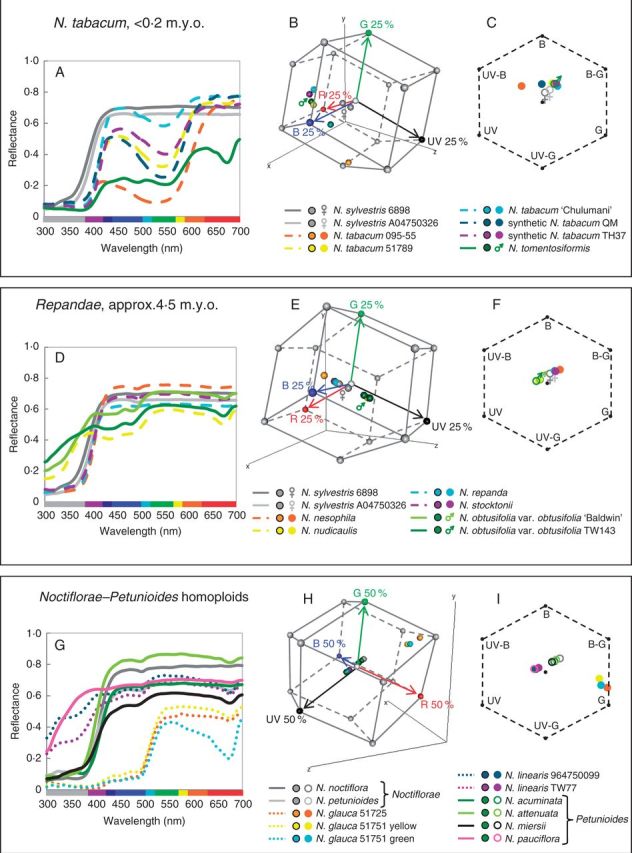Fig. 5.

(A, D, G) Reflectance spectra for polyploid and homoploid sections and their progenitors: (A) N. tabacum; (D) section Repandae; and (G) Noctiflorae–Petunioides homoploid hybrids. Solid lines are used for diploid taxa, dashed lines for polyploid taxa and dotted lines for homoploid hybrid taxa. (B, E, H) Hummingbird colour space for polyploid and homoploid sections and their progenitors: (B) N. tabacum; (E) section Repandae; and (H) Noctiflorae–Petunioides homoploid hybrids. The vertices of the hummingbird colour space represent 25 % (B, E) or 50 % (H) excitation of the photoreceptors; single photoreceptor type vertices (red, green, blue and UV) are coloured red, green, blue and black, respectively, and all other vertices are grey. Red, green, blue and black arrows represent the vectors of these photoreceptors from the origin of the hummingbird colour space. (C, F, I) Bee colour hexagons for polyploid or homoploid sections and their progenitors: (C) N. tabacum; (F) section Repandae; and (I) Noctiflorae–Petunioides homoploid hybrids. Hexagons have been scaled so that vertices represent 40 % excitation of photoreceptors. UV, ultraviolet; UV-B, UV–blue; B, blue; B-G, blue–green; G, green; UV-G, UV–green. For information regarding how to interpret colour hexagons, see Supplementary Data Fig. S1. Female (♀) and male (♂) symbols mark maternal and paternal progenitors, respectively, in the hummingbird and bee colour spaces.
